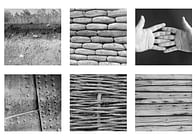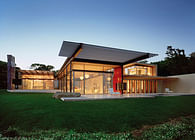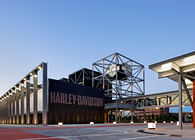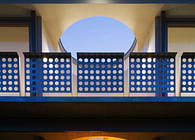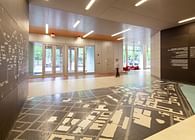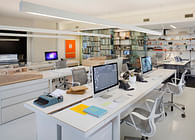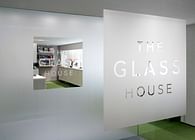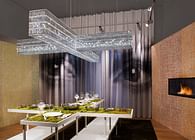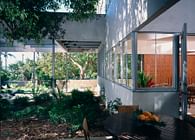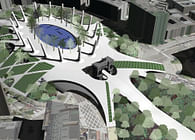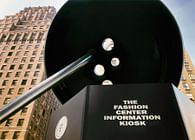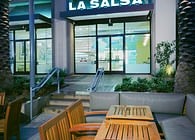
New York, NY
Defining an entire nation, especially one as complex and contradictory as the US, in a single building, is a daunting task.
On the extremely long and narrow site the pavilion is defined by a service wall (containing elevators, escalators, stairs, mechanical shafts, etc.); a purely digital roof (glazed in SPD SmartGlass that instantly switches from clear to opaque to respond to environmental conditions); a green Vertical Farm (employing hydroponic towers in a motion-driven array); and a promenade rising through the pavilion made from salvaged Coney Island boardwalk.
The USA Pavilion is defined by its openness, transparency, and accessibility, and is composed of sustainable design elements and myriad references to American culture. Rather than a forced march through a fixed exhibition the pavilion has a variety of experiences, the ramped entry, with no queue in front of the building, allows visitors to enter directly without waiting. It has clocked (on a quiet day) 10,000 visitors in a four-hour period.
The 10,000 square foot roof terrace is topped with a glass canopy of SPD SmartGlass, switchable from 99.9% opaque to 65% transparent with tiny amounts of power.
The Boardwalk, built of re-milled timbers from the Coney Island Boardwalk destroyed by Hurricane Sandy, is a uniquely American invention; a linear interface between leisure, entertainment and food.
Huge hangar doors open each end of the pavilion acting as canopies during the day.
One visitor described the pavilion as the most powerful at the Expo, with the confidence to be as open as possible.
Status: Built
Location: Milan, IT
Firm Role: Design Architect
Additional Credits: Genius Loci Architettura S.r.l., Nussli Italia S.r.l., dlandstudio, Tillotson Design Associates, Thinc Design, Pentagram, ESA Engineering, SCE Project, Paul Warchol


